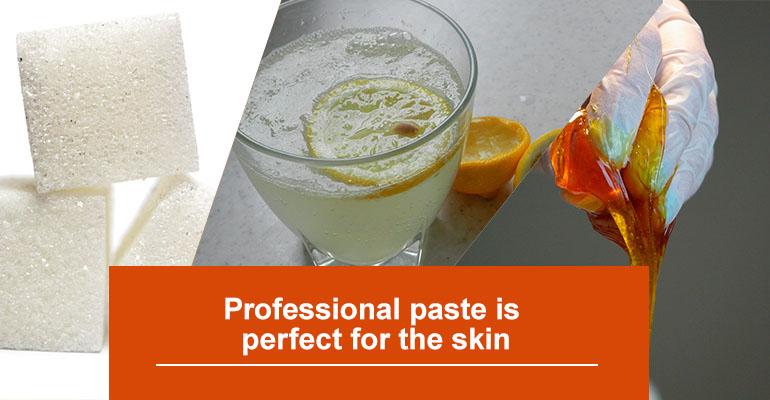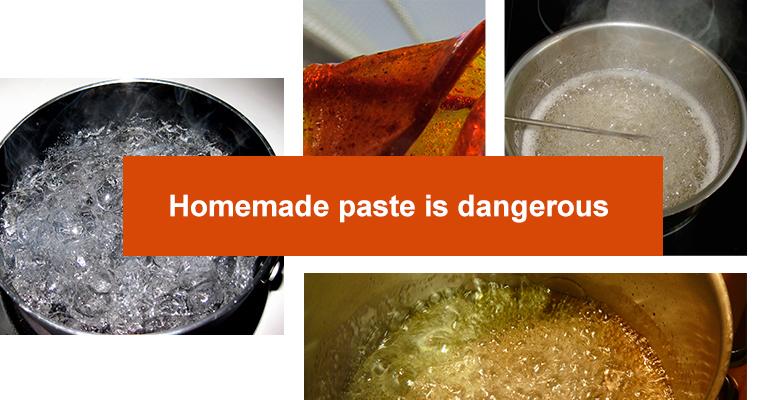How To Fix Burnt Sugar Wax

Nonprofessional method or self-made paste
Sugaring is getting more popular, and on the wave of its fame, you can find more and more recipes and step by step instructions for a self-made sugar paste production. Wherein, you can read that there is no difference between a self-made paste, and one bought "on the market". Furthermore, on a special forums you may find weird discussions , about what is better, paste "from the stove", or professional sugaring paste. So which one is really better and why?
Ingredients and proportions
For a sugaring paste production in a specialized factory, only purified and safe for human health ingredients (pharmacopoeia) are being bought (approximate composition and ingredients depends on the producer's recipes):
- base – sugar, glucose or fructose;
- distilled water, of a certain softness index and pH;
- natural acids.
This purity level of components is impossible to achieve at home conditions. Let's think logically: how can any individual buy all ingredients, without any access to pharmacological industry? The result: unpredictable ingredients – unpredictable consequences.
Components proportions – are the results of laboratory work, where the ingredients were composed not just ideally, but also their effect was proved, based on studies. This level of scrupulosity – is unreal for home conditions. Which means, if there are no stable proportions, the paste will be different every time.

Boiling conditions
Process of a sugaring paste production depends on a long list of technological conditions. For example, compliance of temperature and pressure. Here comes a question: how to achieve a stable 168°C temperature and a constant pressure in a soup pot on the stove?
Another important question – choice of container for boiling. Only few knows, that "pot" must be made from inert metal, to avoid interaction of a high temperature and pressure with the paste. Because otherwise, you can get a really infernal paste.
Furthermore, following correct technological process rules of sugaring paste production in the kitchen – very difficult task. As a prove – multiple posts and comments on forums – about unsuccessful attempts, search for balanced consistence, discussions about struggle with burnt sugar and etc.
Sterility – is a terra incognita, when it comes to a homemade "production". Many articles are devoted to this subject, but their main idea – to achieve sterility at home is impossible.
Accidents at the "factory"
Furthermore, the main problem of "homemade production" – is extremely high chance of accidents. There many reasons to worry:
- Temperature. Imagine, boiling oil in frying pan (for example, olive) approximately 150°C, here, we have pretty much the same temperature.
- Paste stickiness. You can't just shake it off. If sprinkles get on your hands (for example, while stirring) – it's a guaranteed 100% burn of III level. And even if reflectively you try to shake them off with other hand, you get another burn, because sugaring can't be just knock off, it sticks and glues everything around.
- Uncontrollability of the process. If the ingredients are not pure (sugar – from the store, lemon juice – squeezed from lemons), then the mash, sooner or later (if you lost a track of time and overheated) will start boiling and foaming. It's not possible to stop this "porridge" from flowing out of pot. You can't just add water into this "substance", water begins boil like a fountain, and everything gets only worse.

Work with a self-made paste
It's hard to prepare a self-made paste for work: it's easy to overheat it , and turn into candy. Read more about warming up the paste: https://sugaringfactory.com/blog-of-sugaring-factory/is-it-allowed-to-use-a-microwave-to-reheat-the-paste. To obtain a necessary stable level of stickiness of self-made paste – is a difficult task, with no guaranty, that next "batch" will behave the same. That's why, every time, buying a self-made paste, you will have to adapt for its new "behavior". Agree, it can be not very convenient and seems out of place, especially if you client is sitting in front of you.
Besides, paste "imitation", according to forums, does not remove hair equally, leaving quite high percent of hair breakage. So buy sugaring paste from the manufacturer!
Image
Client comes to you to receive a quality service – hair epilation. Nobody needs ingrown hair, redness, pain, burns and other "pleasures". To provide client the best level of quality service, is possible only with using a good sugaring products and high skills. You still want to experiment? Then don't hope to get regular clients and stable income.
Conclusions
| Index | Self-made paste | Professional paste |
| Natural ingredients | + | + |
| Balanced composition | — | + |
| Ingrown hair | High chance | Minimal chance (less than 8 %) breakage if following technology correctly |
| Work with paste | Every time discovering the new product again | Every time stable positive result |
| Production sterility | — | + |
| Your career | Losing customers, since the result of your work is not always positive | Professionally, correctly performed procedure |
Sugar paste is one of the most complicated products on the market of beauty industry. It's way more complicated than any creams, scrubs, gels or any other decorative cosmetics. Paste is not allowed to have any alien components in it . Any chemical, preservative, color ,or "enhancers" immediately contribute into oxidation process, and paste is simply getting burnt, turning into some substance, not even resembling the paste. The main difficulty of production – infernal demands of technological process, that are impossible to repeat at home conditions.
How To Fix Burnt Sugar Wax
Source: https://sugaringfactory.com/blog-of-sugaring-factory/4-reasons-to-not-use-homemade-sugaring-paste-for-hair-removal
Posted by: greenvory1971.blogspot.com

0 Response to "How To Fix Burnt Sugar Wax"
Post a Comment